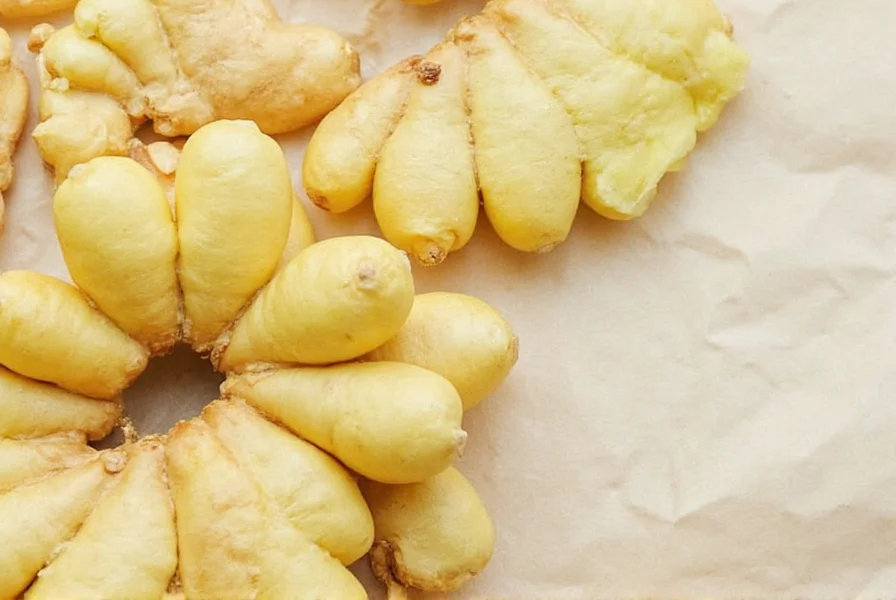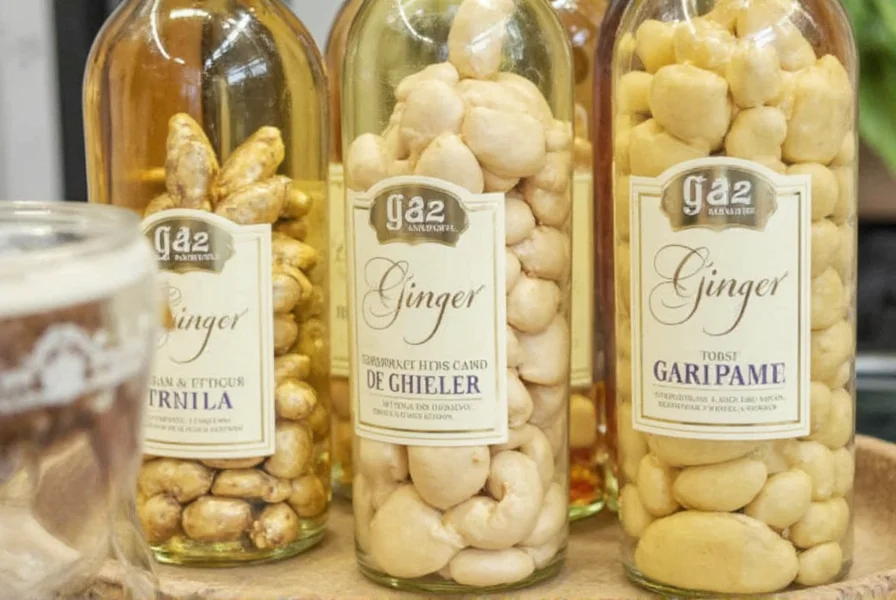Understanding ginger's shelf life is essential for both home cooks and health-conscious consumers. This versatile root spice not only enhances culinary creations but also offers numerous health benefits, making proper storage knowledge valuable for reducing food waste and ensuring you always have quality ginger available.
How to Identify Spoiled Ginger
Recognizing when ginger has gone bad prevents potential foodborne illness and ensures optimal flavor in your dishes. Here are the key indicators that your ginger root has spoiled:
- Mold growth - Visible fuzzy spots in white, green, or black
- Texture changes - Soft, mushy, or slimy areas instead of firm flesh
- Color deterioration - Dark yellow or grayish flesh beneath the skin
- Unpleasant odor - Sour, fermented, or simply "off" smell instead of spicy aroma
- Wrinkled appearance - Excessive shriveling beyond normal drying
When ginger begins to spoil, these signs typically appear gradually. Early detection allows you to cut away affected portions while salvaging the remaining good ginger—provided the spoilage is limited and hasn't penetrated deeply.

Ginger Shelf Life Under Different Storage Conditions
The longevity of ginger depends significantly on how you store it. Understanding these timelines helps prevent premature spoilage:
| Storage Method | Shelf Life | Quality Notes |
|---|---|---|
| Room temperature (cool, dry place) | 1-2 weeks | Begins drying out after first week; best for immediate use |
| Refrigerator (whole, unpeeled) | 3-4 weeks | Maintains best flavor and texture when properly stored |
| Refrigerator (peeled or cut) | 1-2 weeks | Must be airtight; loses quality faster than whole root |
| Freezer (whole or sliced) | 5-6 months | Slightly softer texture when thawed but retains flavor |
| Pickled in vinegar | 1-2 months | Changes flavor profile but extends usability |
Best Practices for Storing Ginger
Maximizing ginger's freshness requires proper storage techniques. Here's how to extend its shelf life while preserving quality:
Refrigeration Methods
The refrigerator provides the optimal balance of temperature and humidity for ginger preservation. For whole, unpeeled ginger:
- Place in a resealable plastic bag with minimal air
- Store in the vegetable crisper drawer
- Wrap in a paper towel to absorb excess moisture
- Check weekly and remove any condensation
For cut ginger, store in an airtight container with a small amount of water, changing the water every 2-3 days. This method keeps cut ginger fresh for up to two weeks.
Freezing Techniques
Freezing ginger offers the longest preservation while maintaining most of its properties:
- Freeze whole roots for easy grating when needed
- Slice or mince before freezing for convenient cooking portions
- Store in vacuum-sealed bags to prevent freezer burn
- Place ginger in ice cube trays covered with water or oil
One advantage of frozen ginger is that you can grate it directly from the freezer without thawing, preserving texture and flavor better than thawed ginger.

Is It Safe to Eat Slightly Spoiled Ginger?
When ginger shows minor spoilage, you might wonder if it's still safe to consume. The answer depends on the extent and type of spoilage:
- Surface mold - If mold appears only on small surface areas, you can cut away at least 1 inch around and beneath the affected area. The remaining ginger is generally safe if it smells and looks normal.
- Soft spots - Localized soft areas can be trimmed away, but widespread softness indicates advanced spoilage.
- Wrinkling - Drying and wrinkling alone doesn't indicate spoilage—this is natural moisture loss. Simply peel the wrinkled skin to reveal usable ginger beneath.
However, if ginger has a sour smell, shows extensive mold, or has darkened throughout, it should be discarded. Consuming significantly spoiled ginger may cause digestive discomfort or foodborne illness, particularly for those with sensitive systems.
Creative Uses for Aging Ginger
When ginger begins showing early signs of aging but isn't yet spoiled, consider these creative applications that make the most of its remaining quality:
- Make ginger tea by simmering slices in water
- Create ginger syrup for cocktails or desserts
- Blend into smoothies where texture matters less
- Prepare ginger paste for future cooking
- Make pickled ginger for sushi or as a condiment
These methods help utilize ginger that might otherwise go to waste while its flavor remains strong, even if its texture has begun to change slightly.
Understanding Ginger's Natural Aging Process
Not all changes in ginger indicate spoilage. Ginger naturally undergoes certain transformations as it ages that don't necessarily mean it's gone bad:
- Drying out - Ginger gradually loses moisture, becoming harder and more fibrous but still usable
- Sprouting - Like potatoes, ginger may develop small growths which can be removed
- Color variation - Natural yellow tones may deepen slightly without indicating spoilage
These natural aging processes differ from actual spoilage, which involves microbial growth or chemical breakdown that affects safety and quality. Learning to distinguish between normal aging and true spoilage helps reduce unnecessary food waste.
Frequently Asked Questions
Can you eat ginger that has turned pink?
Yes, ginger sometimes develops a natural pink hue near the skin, especially in younger roots. This "stem ginger" coloration is perfectly safe to eat and doesn't indicate spoilage. However, if pink areas appear accompanied by mold or unpleasant odors, the ginger has likely spoiled.
How can you tell the difference between mold and natural ginger fibers?
Mold appears as fuzzy, web-like growth in various colors (white, green, black), while natural ginger fibers are smooth, stringy, and yellowish. Mold typically grows on the surface and can be wiped away, whereas fibers are part of the ginger's structure. If you're unsure, smell the ginger—moldy ginger has a distinctly unpleasant odor.
Does dried ginger powder go bad?
Dried ginger powder has a much longer shelf life than fresh ginger, typically lasting 2-3 years when stored properly in an airtight container away from light and moisture. While it doesn't technically spoil, it gradually loses potency and flavor. Discard ginger powder if it develops an off smell, shows signs of moisture, or contains pantry pests.
Can you freeze ginger in water?
Yes, freezing ginger in water is an excellent preservation method. Place peeled ginger slices in ice cube trays, cover with water, and freeze. Once frozen, transfer the ginger cubes to airtight freezer bags. This method preserves ginger for 5-6 months and allows you to add ginger directly to teas, soups, or cooking liquids without thawing.
Why does ginger sometimes turn green when stored?
Ginger may develop a slight greenish tint when stored in the refrigerator due to a natural enzymatic reaction, not mold. This color change, often called "ginger blue," occurs in some varieties and is completely safe to eat. However, if the green color is accompanied by fuzzy growth or unpleasant odors, it indicates actual mold and the ginger should be discarded.











 浙公网安备
33010002000092号
浙公网安备
33010002000092号 浙B2-20120091-4
浙B2-20120091-4